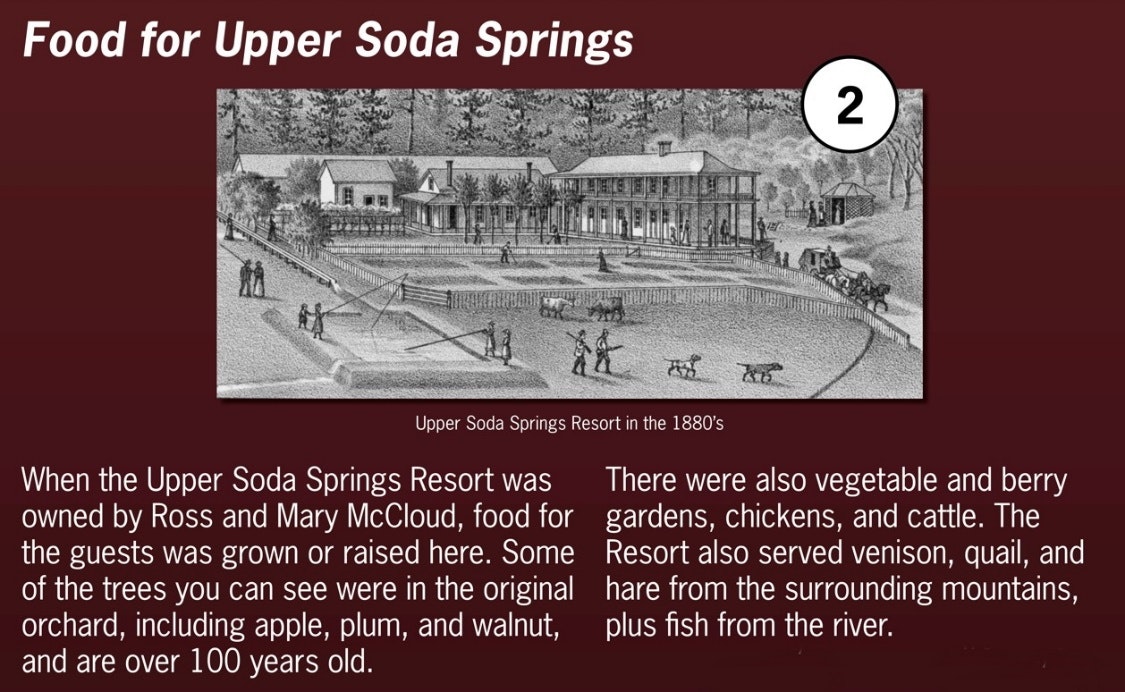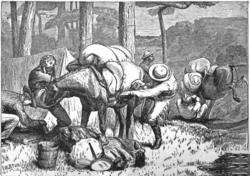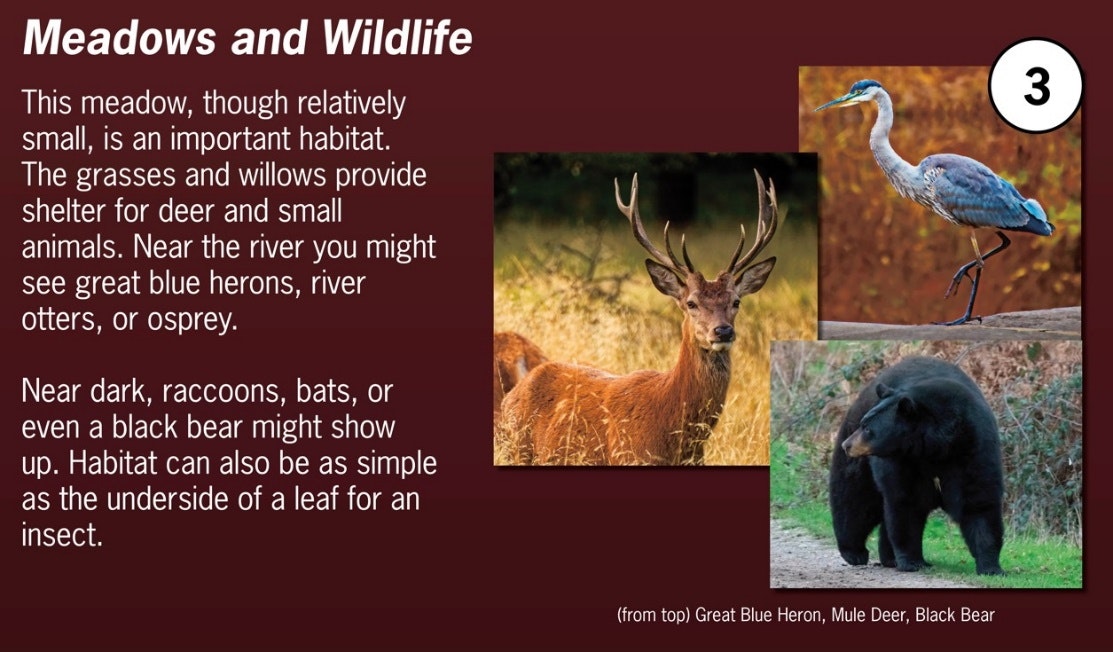Self-Guided Tour Sign #2 – Food For Upper Soda Springs

Until the arrival of the railroad here in the late 1880’s, much of the food for the guests of the Upper Soda Springs Resort had to be grown here on the premises. Fruit trees, vegetable gardens, and berry gardens of many kinds were planted here. For example, the blackberry bushes you see behind you are direct descendants from those original Resort gardens, and the plum trees to your left are also descendants of the original orchard. The older trees in front of you are original trees planted to provide food for Resort guests. Food that couldn’t be grown here, such as coffee, flour, and sugar, arrived on stagecoaches or “mule trains”—large groups of mules carrying food and commercial goods.
For more detailed information, continue reading below.
Later on this Self-Guided Tour, you will be passing by where the Resort kept cattle, chickens, and other farm animals. The cattle provided milk, cream, cheese, and butter for the guests, and the chickens provided eggs and meat. In addition, fresh venison and quail came from the surrounding mountains, and fresh salmon and trout came from the river.
An advertisement for the Resort, written in the 1890’s, had the following colorful description of the Upper Soda Springs Resort:
There are great, brown-eyed, well-fed cows in the pasture-lands, and clean proud-looking fowls in the barn-yard.
The table groans with plenty—there is yellow butter and creamy cheese, home-made preserves and pickles guileless of adulteration, blocks of white honey in the comb, potatoes that laugh their skins off, young venison, and trout, quail, and hare in their seasons, and fruit dishes full of great, fat, red-cheeked apples, entreating you to come and eat them.
Stagecoaches and “mule trains” brought staples (like flour, coffee, and sugar) that couldn’t be grown here. “Mule trains” were the “big-rig trucks” of the era—twenty to sixty mules in a group driven by “mule packers”. These almost-forgotten entrepreneurs loaded their mules with goods of all kinds, from food and clothes to pots and pans, and slowly made their way along the early trails and rough dirt roads. Being a mule packer was a dangerous occupation, as they were subject to attacks from thieves.


Wikipedia article about mule trains
The Resort had special corrals and feeding pens for mules, which were on the upper part of the Resort property, just south of the intersection of today’s Masson Avenue and Stagecoach Road. In memories written by Elda McCloud Masson (born here in 1860), she recalled that as a child she looked forward to hearing the soft jingle of bells worn by the lead mules as the mule trains approached the Resort.


